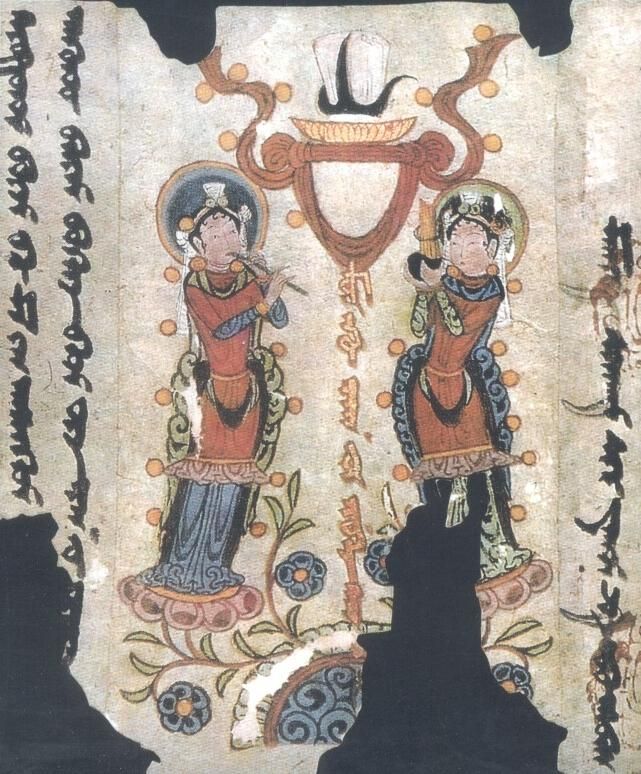|
Archegos (Manichaeism)
The Archegos was the head of the Manichaean religion. No surviving list of every Archegos remains, and the succession procedure is unknown. Abū Hilāl al-Dayhūri is the last known Archegos. The first Archegos was the prophet Mani. Known Archegi * Mani * Mar Sisin (276–286)Lieu, Samuel N.C. ''Manichaeism in the Later Roman Empire and Medieval China: a Historical Survey.'' Pages 80–82. Manchester University Press, 1985. https://openlibrary.org/books/OL2863189M/Manichaeism_in_the_later_Roman_Empire_and_medieval_China * Innaios, who negotiated the end of persecution in Mesopotamia * MihrLieu, Samuel N.C. ''Manichaeism in the Later Roman Empire and Medieval China: a Historical Survey.'' Pages 83, 85. Manchester University Press, 1985. https://openlibrary.org/books/OL2863189M/Manichaeism_in_the_later_Roman_Empire_and_medieval_China * Zad Hurmuz * Miqlas * Abū Hilāl al-Dayhūri Abū Hilāl al-Dayhūri was a Manichaeism, Manichaean leader. Of North African origin, he served a ... [...More Info...] [...Related Items...] OR: [Wikipedia] [Google] [Baidu] |
Manichaeism
Manichaeism (; in New Persian ; ) is a former major religionR. van den Broek, Wouter J. Hanegraaff ''Gnosis and Hermeticism from Antiquity to Modern Times''SUNY Press, 1998 p. 37 founded in the 3rd century AD by the Parthian Empire, Parthian prophet Mani (prophet), Mani (AD 216–274), in the Sasanian Empire. Manichaeism teaches an elaborate dualistic cosmology describing the conflict between good and evil, struggle between a goodness and value theory, good, spirituality, spiritual world of light, and an evil, material world of darkness. Through an ongoing process that takes place in human history, light is gradually removed from the world of matter and returned to the world of light, whence it came. Its beliefs are based on local Mesopotamian religious movements and Gnosticism. It reveres Mani as the final prophet after Zoroaster, Gautama Buddha, and Jesus. Manichaeism was quickly successful and spread far through the Aramaic language, Aramaic-speaking regions. It thrived be ... [...More Info...] [...Related Items...] OR: [Wikipedia] [Google] [Baidu] |
Abū Hilāl Al-Dayhūri
Abū Hilāl al-Dayhūri was a Manichaeism, Manichaean leader. Of North African origin, he served as Archegos (Manichaeism), archegos, the traditional leader of the Manichaean sect seated in Seleucia-Ctesiphon some time during the mid-to-late eighth century. Origins al-Dayhūri hailed from North Africa, once a major center of Manichaean activity.Glassé, Cyril. ''The New Encyclopedia of Islam.'' Page 64. Rowman & Littlefield, 2008. He then travelled to present-day Iraq. It is unknown, however, whether he converted to Manichaeism after his arrival there or had originally been a Manichaean in Africa. As such, it is difficult to use him to gauge the health of Manichaeism in eighth-century North Africa.Lieu, Samuel N.C. ''Manichaeism in the Later Roman Empire and Medieval China: a Historical Survey.'' Pages 83, 164. Manchester University Press, 1985. He may have been a Berber people, Berber. Significance During the reign (754-775) of the second Abbasid caliph, Al-Mansur, al-Dayhūri a ... [...More Info...] [...Related Items...] OR: [Wikipedia] [Google] [Baidu] |
Mani (prophet)
Mani (in Middle Persian: 𐭌𐭀𐭍𐭉/𐭬𐭠𐭭𐭩/𐮋𐮀𐮌𐮈/𐬨𐬁𐬥𐬌/𐫖𐫀𐫗𐫏 ''Māni'', New Persian: ''Māni'', Chinese language, Chinese: ''Móní'', Syriac language, Syriac ''Mānī'', Koine Greek, Greek , Latin '; also , Latin ', from Syriac ''Mānī ḥayyā'' "Living Mani", –2 March AD 274 or 26 February AD 277) was an Iranian peoples, Iranian prophet and the founder of Manichaeism, a religion most prevalent in late antiquity strongly influenced by Gnosticism, Christianity, Zoroastrianism, and Buddhism, which was once widespread but is now confined to small areas of China, such as Fujian. Mani was born in or near Seleucia-Ctesiphon (south of modern Baghdad) in Mesopotamia, at the time part of the Parthian Empire. Seven Scriptures of Mani, Seven of his major works were written in Syriac language, Syriac, and the eighth, dedicated to the Sasanian Empire, Sasanian emperor Shapur I, was written in Middle Persian.Henning, W.B., ''The ... [...More Info...] [...Related Items...] OR: [Wikipedia] [Google] [Baidu] |
Mar Sisin
Mar Sisin, the letter of the last thought (Syrian: Mār Sîsin, ?–291/292), also known as Sisinnius (Latin: Sisinnius), one of the twelve Apostles of the founder of Mani. He was one of the most influential Manichaeans in the early church, as he served as a core figure of the early church and was the first Manichaean Archegos, the head of the Manichaean religion. Mission Mo Sixin was one of the twelve apostles chosen by Mani himself. When Mani was alive, he had a high status within Manichaeism. When Mani left Babylon, he was responsible for the internal work of the church. He went to the Roman Empire and preached in Central Asia. Around 261-262, Mo Sixin went to Mary to inspect and was very satisfied with the missionary situation there. He sent someone to bring two holy books and to see Mar Ammo who was preaching in Zamb. He copied these books in Mulu. Leading the Church In 273, Mar Ammo went to visit Mani in prison, and Mani delivered the "last letter" to Mohamo, explainin ... [...More Info...] [...Related Items...] OR: [Wikipedia] [Google] [Baidu] |
Manichaean Schisms
Although Manichaeism has historically been a fairly unified religion, it has had some schisms over its history. These schisms occurred from the sixth century AD until at least the 10th century AD. In the sixth century, there was a schism among Manichaeans between the Denawars and the see of Babylon, in response to persecution in Mesopotamia. The see of Babylon was the predominant sect of Babylonia and the Middle East, while the Denawars were prevalent in Sogdiana and founded by Shad Ohrmazd;H. J. Klimkeit. ''Manichaeism and Nestorian Christianity'' in: History of Civilizations of Central Asia, Vol. IV, Part 2. Motilal Banarsidass, 2003. . however, they viewed Mar Ammo as their founder since he established Manichaeism in the region. The rift between the eastern and western Manichaeans was not caused by any doctrinal matters. The seat of the Archegos remained in Seleucia-Ctesiphon, but the influence on Manichaeism mostly came from Transoxiana. After the Arab victory at the Battle ... [...More Info...] [...Related Items...] OR: [Wikipedia] [Google] [Baidu] |

.jpg)
